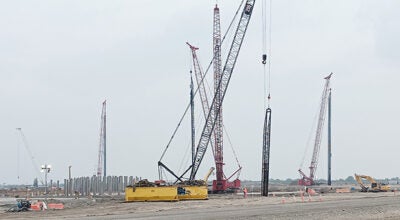Where Port Arthur is in Hurricane Harvey recovery
Published 11:02 am Saturday, March 3, 2018
Rebecca Underhill, assistant to the city manager/budget officer, gave a presentation on the status of Hurricane and Tropical Storm Harvey recovery funding.
The Federal Emergency Management Agency’s Public Assistance grant program provides federal assistance to government organizations following a presidentially declared disaster, she said.
PA provides grants so communities can quickly respond to and recover from major disasters or emergencies. Through the program, FEMA provides supplemental federal disaster grant assistance for debris removal, life-saving emergency protective measures, and the repair, replacement or restoration of disaster-damaged publicly owned facilities.
The PA program also encourages protection of these damaged facilities from future events by providing assistance for hazard mitigation measures during the recovery process.
FEMA hosted a recovery scoping meeting on Jan. 10. The clock started and the city has 90 days to complete their damage inventory. Staff is working with FEMA to identify every facility, activity cost tied to the storm.
There are two emergency work categories: debris removal and emergency protective measures. This work must be completed within six months of the disaster declaration — Feb. 25.
The city has asked for and expects to receive a six-month extension.
For debris operations, funding is set up as a 90/10 split between federal and local share.
The state of Texas is funding the local match for this activity. To date, the city has received $11.375 million from FEMA and the state for this activity. The city has spent $10 million with the final contractor billings to be processed.
The federal share for emergency protective measures is 100 percent for the first 30 days and 90 percent thereafter. The departments that are developing the support for these costs include personnel and supplies during the event and ongoing costs such as temporary facilities.
Under permanent work, property insurance will be the first funding source for repairs to city facilities. Staff is identifying all projects that could require funding in part from FEMA — uninsured or underinsured properties. Funding is at a 90/10 cost share.
The city identified damage at 24 buildings, including public works and utilities complex at H.O. Mills Road, the library and civic center and fire stations, as well as more than 60 lift stations, pump stations ,parks and pools.
The city received $2.7 million in flood policy payments. Three buildings are under repair with Texas Municipal League directly — Fire Station #6, the civic center and the library.
The city identified 242 pieces of equipment with some type of damage. The original cost was $24.8 million. Assessments and repairs are continuing.
The equipment and vehicles are covered by property insurance at the actual cash value. To date, the city received $1 million in insurance reimbursement for equipment. The staff is pursuing funding from FEMA for gaps in coverage and deductibles.
Some additional sources of funding are FEMA and state mitigation funding to improve properties, especially those subject to repetitive loss. Funding levels are 90/10 or 75/25 cost share, depending on the program.
The city is working to identify potential projects as they develop the damage inventory.
The city’s long term recovery plan is meeting with agencies that can assist in Community Development Block Grants-Disaster Recovery and other funding sources through either the Texas General Land Office, HUD Region 6, Rebuild Texas Fund or the South East Texas Regional Planning Commission.
The U.S. Department of Housing and Urban Development recently issued its guidance for the administration of the recent award of $5.024 billion to the state to help with the long-term recovery following Harvey.
These disaster recovery funds will be administered by the GLO Community Development & Revitalization program and can be used for a wide variety of activities including housing redevelopment, infrastructure repair and long-term planning. HUD designates a number of counties and zip codes as “most impacted and distressed” areas and required 80 percent of the funds to be expended for recovery in these areas. Jefferson County is included.
The GLO is currently working on an action plan outlining the distribution and use of these funds.
In preparation for the release of these funds later this year, staff is working on a long-term recovery plan. They will be identifying projects that will promote housing and can be completed within two years.
This plan will be the basis of the city’s application for these funds. The draft of the city’s proposed long-term recovery will be coming to City Council in the coming weeks.





